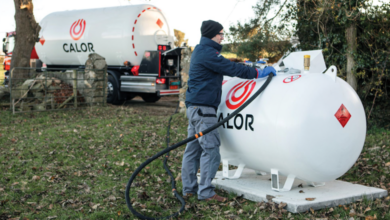Navigating the EU’s energy transition

Speaking to eolas Magazine, Katja Yafimava, Senior Research Fellow at the Oxford Institute for Energy Studies, offers a deep dive into the European Union’s decarbonised gas and hydrogen package.
 “The future EU gas system will look very different,” Yafimava says. “There will be much less natural gas to transport as the system decarbonises.”
“The future EU gas system will look very different,” Yafimava says. “There will be much less natural gas to transport as the system decarbonises.”
With the adoption of the Recast Gas Directive and Regulation, the EU is laying the groundwork for an energy system increasingly defined by decarbonised gases and pure hydrogen. “Existing gas networks will face a massive challenge, transitioning to accommodate more low-carbon gases, and some will inevitably need to be repurposed or decommissioned,” Yafimava states.
Building hydrogen networks
Central to the legislation is the vision of a dual system: one network transporting lower-carbon gases such as biomethane, and another dedicated to high-purity ‘green’ hydrogen. However, as Yafimava notes: “The topology of the future hydrogen networks is very uncertain. There is a big uncertainty about both supply and demand.”
Yafimava further stresses the risks of investing in infrastructure prematurely: “You do not want to build infrastructure and then find there is neither supply nor demand at either end of the pipeline.”
Regulation will play a critical role in managing this uncertainty. Flexibility, Yafimava emphasises, is paramount: “The regulation must be sufficiently flexible to allow small-scale, no-regret networks to start and to scale up if needed.”
The EU’s current hydrogen infrastructure is minuscule by comparison to the gas network, with just 2,000 kilometres of hydrogen pipelines confined largely to industrial clusters. “It is a huge difference in scale,” she said, warning that ambitions for a European hydrogen backbone, largely championed by transmission system operators (TSOs), may not materialise at the projected size. “Most of the proposed hydrogen backbone relies on repurposing existing gas pipelines because it is less expensive,” she adds, “but whether that will happen at the projected scale remains to be seen”.
Yafimava also points out the pragmatic steps being taken: “The first PCI [project of common interest] list for hydrogen and electrolysis projects confirms that hydrogen infrastructure will initially build on existing industrial clusters, predominantly in western Europe.”
Despite the legislative ambition, she cautions that “there is no hydrogen market in Europe as such”. Legislators, she explains, face a “tabula rasa” when drafting rules for hydrogen, opting to largely “cut and paste” natural gas market models, including unbundling provisions and regulated third-party access. Whether this will prove too rigid for a nascent market remains an open question: “It is valid to ask whether such regulation might stifle market development.”
Nevertheless, Yafimava acknowledges that flexibility has been integrated into the framework. “There is a transition period until 2033 for regulated access to hydrogen infrastructure,” she says, a compromise reached after initial proposals for immediate implementation faced resistance. Furthermore, the framework allows “all sorts of exemptions and derogations for both existing and new hydrogen networks”, offering critical breathing space for market evolution.
Phasing out LNG
On natural gas, Yafimava says the EU’s energy package was “hijacked” by the energy crisis of 2022. Emergency measures such as storage mandates, tariff discounts for LNG imports, and a now-expired wholesale price cap were introduced. However, she says: “The fundamental provisions governing the natural gas market have been preserved. There are no groundbreaking changes.”
A key focus going forward, she argues, must be on coordinating the development and repurposing of networks. “The legislation requires national network development plans to identify infrastructure that can be decommissioned or repurposed,” Yafimava explains. However, she highlights a troubling inconsistency: “There is currently a huge gap between national plans and the EU Ten-Year Network Development Plan, particularly regarding low-carbon gas infrastructure.”
Implementation will determine the success of the framework. “It is critical to ensure that the natural gas phase-out and hydrogen phase-in are done in a coordinated manner without jeopardising security of supply,” she warns. Gas will remain important during the transition: “Although the role of gas is fading, it is still crucial for security, especially on low-wind, low-sun days.”
Further regulatory evolution is inevitable. Yafimava outlines several pressing challenges: the fate of emergency measures inherited from the crisis, increased tariff uncertainty due to regulators’ discretionary powers on discounts, and the urgent need to update capacity allocation rules to reflect changing gas flow patterns. “Flexibility and efficient provision of capacity will be crucial,” she says.
On LNG, Yafimava outlines a growing need for reform: “Given the increased role of imported LNG, changes are needed to allow more flexible secondary capacity trading and avoid hoarding.”
Path forward
In conclusion, while the decarbonised gas and hydrogen package sets the stage for a transformed European energy system, much depends on the details of implementation. “The package is not the end of the journey,” Yafimava reflects.
“A roadmap will be necessary to ensure consistent and efficient implementation, particularly for financing the move from natural gas to hydrogen infrastructure.” She reiterates that if rigidity hampers market development, “flexibility could and must be added as needed”.





